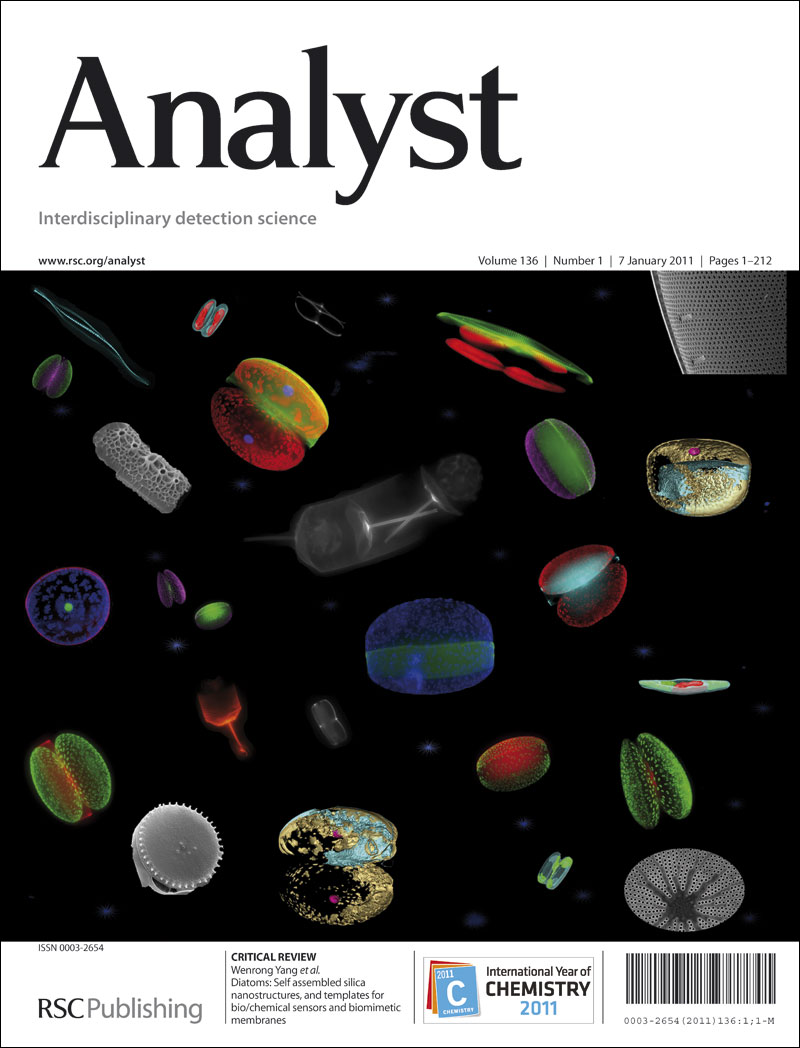Rapid Identification of Pathogenic Bacteria from Clinic Positive Blood Cultures Via Virus-like Magnetic Bead Enrichment and MALDI-TOF MS Profiling
IF 3.6
3区 化学
Q2 CHEMISTRY, ANALYTICAL
引用次数: 0
Abstract
Reducing the time required for the detection of bacteria in blood samples is a critical area of investigation in the field of clinical diagnosis. Positive blood culture samples often require a plate culture stage due to the interference of blood cells and proteins, which can result in significant delays before the isolation of single colonies suitable for matrix-assisted laser desorption/ionization time-of-flight mass spectrometry (MALDI-TOF MS) analysis. In this study, we developed a non-specific enrichment strategy based on SiO2-encapsulated Fe3O4 nanoparticles combined with MALDI-TOF MS for direct identification of bacteria from aqueous environments or positive blood culture samples. Three distinct types of Fe3O4@SiO2 magnetic nanoparticles (MNPs) with unique surface morphologies were developed: spherical MNPs with smooth surfaces (Fe3O4@SN), mesoporous silica coated MNPs (Fe3O4@MSN), and MNPs exhibiting a viral spiked structure (Fe3O4@VSN). These MNPs exhibited excellent binding affinity towards both Staphylococcus aureus and Klebsiella pneumoniae in PBS and artificial saliva solutions. Furthermore, the use of the Fe3O4@VSN strategy, which involves non-specific interactions between bacterial cells and the virus-like surface, resulted in a dramatic reduction in the minimum detectable concentrations of target pathogens by up to 1000-fold compared to conventional methods. Our results demonstrate that the Fe3O4@VSN strategy has the potential to significantly reduce the processing time required after blood culture and may be useful for enrichment and identification of microorganisms in complex clinical samples.通过病毒样磁珠富集和 MALDI-TOF MS 图谱从临床阳性血液培养物中快速鉴定病原菌
减少血液样本中细菌检测所需的时间是临床诊断领域的一个关键研究领域。由于血细胞和蛋白质的干扰,阳性血培养样品通常需要一个平板培养阶段,这可能导致在分离适合基质辅助激光解吸/电离飞行时间质谱(MALDI-TOF MS)分析的单个菌落之前有明显的延迟。在这项研究中,我们开发了一种基于sio2封装的Fe3O4纳米颗粒结合MALDI-TOF MS的非特异性富集策略,用于直接鉴定水环境或阳性血液培养样品中的细菌。开发了三种不同类型的具有独特表面形态的Fe3O4@SiO2磁性纳米颗粒(MNPs):表面光滑的球形MNPs (Fe3O4@SN),介孔二氧化硅涂层MNPs (Fe3O4@MSN)和具有病毒尖刺结构的MNPs (Fe3O4@VSN)。这些MNPs在PBS和人工唾液溶液中对金黄色葡萄球菌和肺炎克雷伯菌均表现出良好的结合亲和力。此外,Fe3O4@VSN策略涉及细菌细胞与病毒样表面之间的非特异性相互作用,与传统方法相比,使用该策略可将目标病原体的最低可检测浓度大幅降低多达1000倍。我们的研究结果表明,Fe3O4@VSN策略有可能显著减少血液培养后所需的处理时间,并可能对复杂临床样品中微生物的富集和鉴定有用。
本文章由计算机程序翻译,如有差异,请以英文原文为准。
求助全文
约1分钟内获得全文
求助全文
来源期刊

Analyst
化学-分析化学
CiteScore
7.80
自引率
4.80%
发文量
636
审稿时长
1.9 months
期刊介绍:
"Analyst" journal is the home of premier fundamental discoveries, inventions and applications in the analytical and bioanalytical sciences.
 求助内容:
求助内容: 应助结果提醒方式:
应助结果提醒方式:


